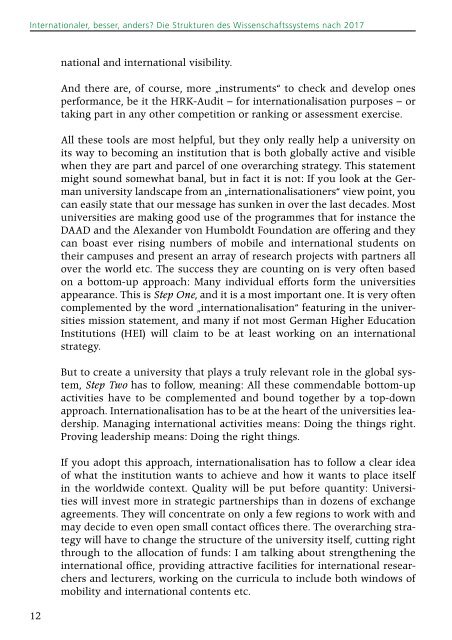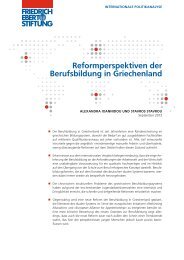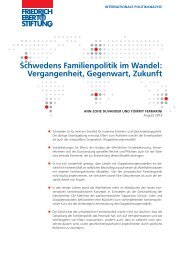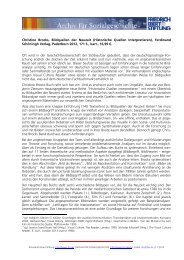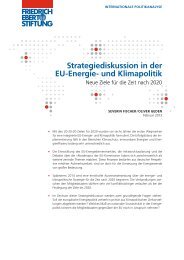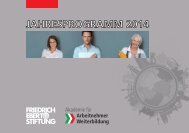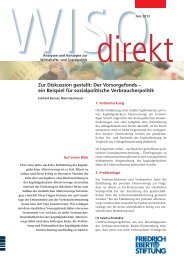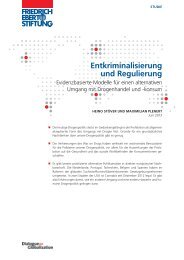Internationaler, besser, anders? - Bibliothek der Friedrich-Ebert ...
Internationaler, besser, anders? - Bibliothek der Friedrich-Ebert ...
Internationaler, besser, anders? - Bibliothek der Friedrich-Ebert ...
Sie wollen auch ein ePaper? Erhöhen Sie die Reichweite Ihrer Titel.
YUMPU macht aus Druck-PDFs automatisch weboptimierte ePaper, die Google liebt.
<strong>Internationaler</strong>, <strong>besser</strong>, <strong>an<strong>der</strong>s</strong>? Die Strukturen des Wissenschaftssystems nach 2017<br />
12<br />
national and international visibility.<br />
And there are, of course, more „instruments“ to check and develop ones<br />
performance, be it the HRK-Audit – for internationalisation purposes – or<br />
taking part in any other competition or ranking or assessment exercise.<br />
All these tools are most helpful, but they only really help a university on<br />
its way to becoming an institution that is both globally active and visible<br />
when they are part and parcel of one overarching strategy. This statement<br />
might sound somewhat banal, but in fact it is not: If you look at the German<br />
university landscape from an „internationalisationers“ view point, you<br />
can easily state that our message has sunken in over the last decades. Most<br />
universities are making good use of the programmes that for instance the<br />
DAAD and the Alexan<strong>der</strong> von Humboldt Foundation are offering and they<br />
can boast ever rising numbers of mobile and international students on<br />
their campuses and present an array of research projects with partners all<br />
over the world etc. The success they are counting on is very often based<br />
on a bottom-up approach: Many individual efforts form the universities<br />
appearance. This is Step One, and it is a most important one. It is very often<br />
complemented by the word „internationalisation“ featuring in the universities<br />
mission statement, and many if not most German Higher Education<br />
Institutions (HEI) will claim to be at least working on an international<br />
strategy.<br />
But to create a university that plays a truly relevant role in the global system,<br />
Step Two has to follow, meaning: All these commendable bottom-up<br />
activities have to be complemented and bound together by a top-down<br />
approach. Internationalisation has to be at the heart of the universities lea<strong>der</strong>ship.<br />
Managing international activities means: Doing the things right.<br />
Proving lea<strong>der</strong>ship means: Doing the right things.<br />
If you adopt this approach, internationalisation has to follow a clear idea<br />
of what the institution wants to achieve and how it wants to place itself<br />
in the worldwide context. Quality will be put before quantity: Universities<br />
will invest more in strategic partnerships than in dozens of exchange<br />
agreements. They will concentrate on only a few regions to work with and<br />
may decide to even open small contact offices there. The overarching strategy<br />
will have to change the structure of the university itself, cutting right<br />
through to the allocation of funds: I am talking about strengthening the<br />
international office, providing attractive facilities for international researchers<br />
and lecturers, working on the curricula to include both windows of<br />
mobility and international contents etc.


